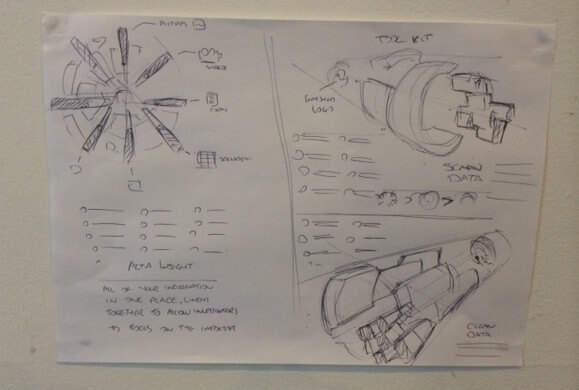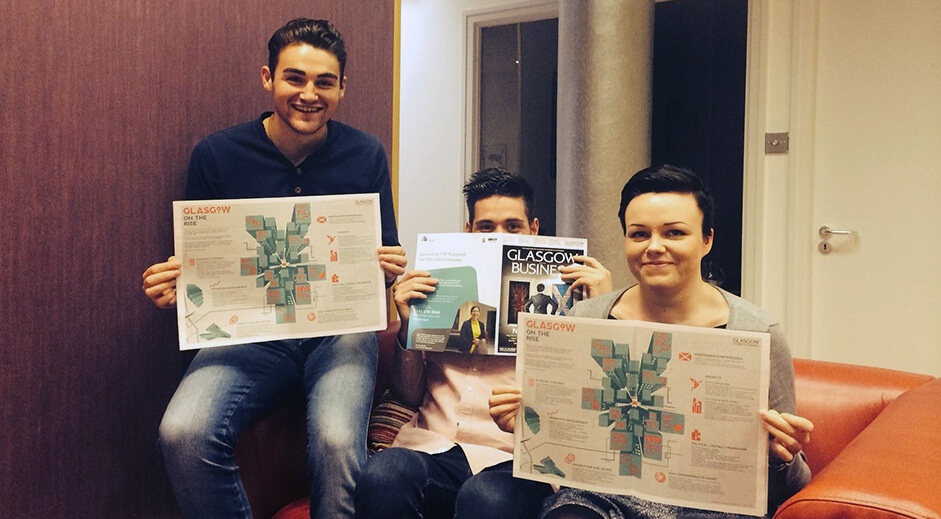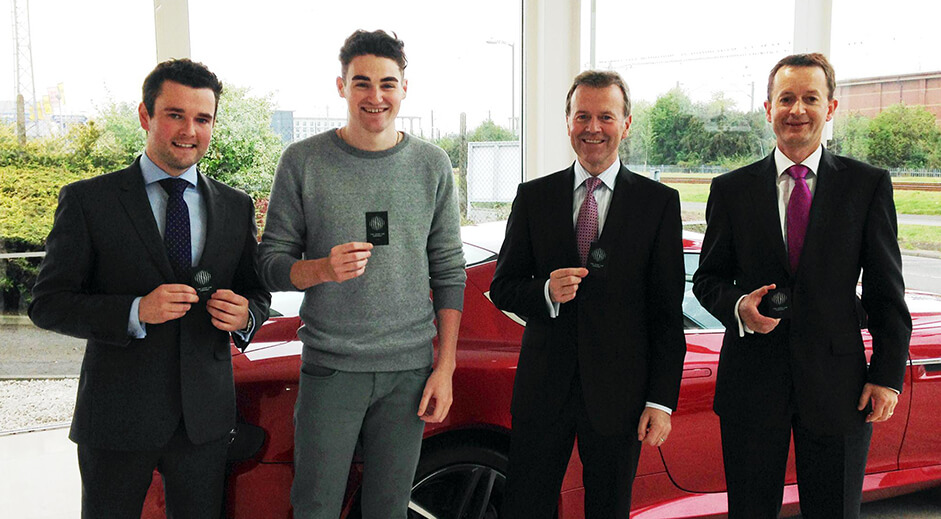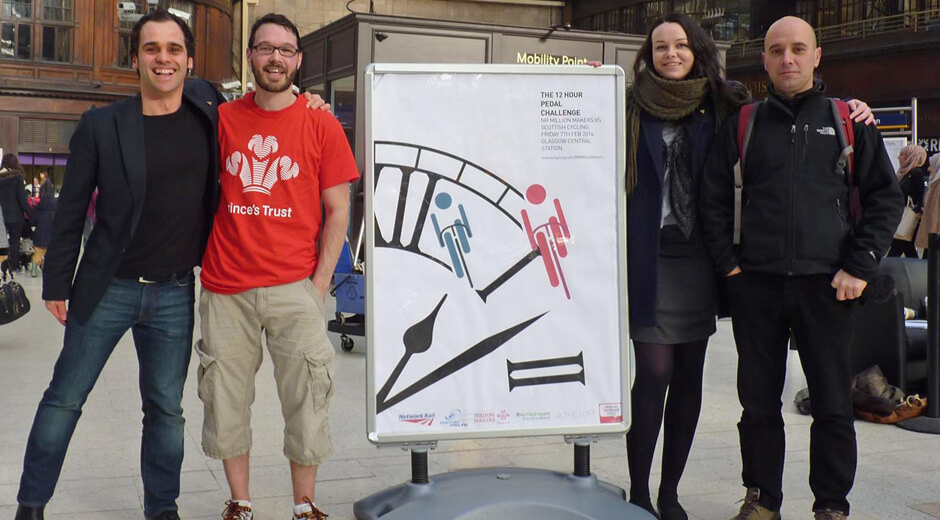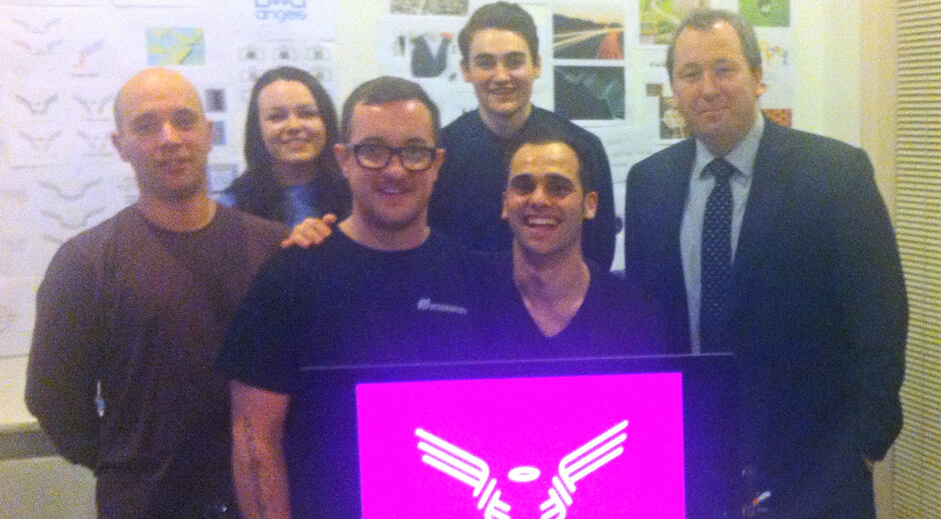Last week I was truly privileged to be asked by The University of The West of Scotland to give a guest lecture about the loft. Thinking I was going to be speaking to design students about some of the lofts branding, graphical and digital design work – I mocked up ‘10 of the Key principles’ about our company ethos ‘Design with Soul,’ working in our studio and our methods which I believe are unique and lead to outstanding design solutions. As it turned out, my talk was to be given to the students of the business school and go more into business practices than design ethos. Thankfully, after the initial horror, a quick content re-write, the presentation was delivered and well received last week.
However I thought I would take this opportunity to share 10 (and these are by no means definite) of the key principles about the way we work in the loft. Working this way in the last year has brought many new client wins and widespread praise for our work. They do not go into the mechanics of design as such, but are more about attitudes towards design and the design process itself.
Please enjoy these 10 of our core principles into designing with soul…
1. BEGIN WITH THE END IN MIND
This principle has as much to do about mentality as it does about practice. Beginning with the end in mind means having absolute faith in yourself to be able to deliver an outstanding solution to your design problem, one that will make the client happy and achieve success. It means keeping this faith in your work throughout the entire process, regardless whether progress is fast or slow. It also means that favouring pleasing results over pleasing methods, many designers will spend a huge amount of time pleasing themselves trying lots of different things running into creative cul-de-sacs, when they already have viable design solutions which can be completed with just a little refinement/honing. Yes, the client may have been billed for a certain amount of time, and that client should be given that time, but getting to the solution quicker is to the benefit of everybody and any time left over can be given back to the client in the form of additional items – facebook banner, some customised icons, etc, there are many ways to fill this time. When speaking of time, it is just another resource, and when in short supply, you will be amazed at how much more creative you can become with your design solutions. We work fast in the loft, we road-test ideas quickly, we learn quickly, we fail quickly, this concentration of knowledge and energy always leads to outstanding design solutions that are usually created in times that are quicker than other studios. Doubling the amount of time on a creative project seldom gives you a solution which is twice as good.
2. GIVE THE CLIENT WHAT THEY WANT
This may seem far and away like the most obvious principle, but it is amazing the amount of time we fall foul of this, myself included. We are all guilty of giving the client what we think they want, or what we want to give them and not what they actually want. The reason this principle is so important is that so much time can be saved going down blind ally’s – you can almost block in 30/40-% of your branding or graphical solution just by asking the right questions and really listening to what a client wants. More importantly, the more bespoke and personal you can make a design solution the more the client will value your service. Having a client that truly values your service helps you gain a more loyal client and more importantly you feel great explaining to others the different elements of your design that made your last client truly satisfied. The greater the challenge, the narrower the window of design constraints, the greater the opportunity for you to really test your creative mettle. Please do not get this advice mixed up with the client is always right and should never be challenged, we should always look to educate and inform at every stage, particularly at the beginning of the process, but once a designer has their parameters, the difference between the amateurs and the pros is that the true pros always deliver regardless how limited their brief may appear to be!
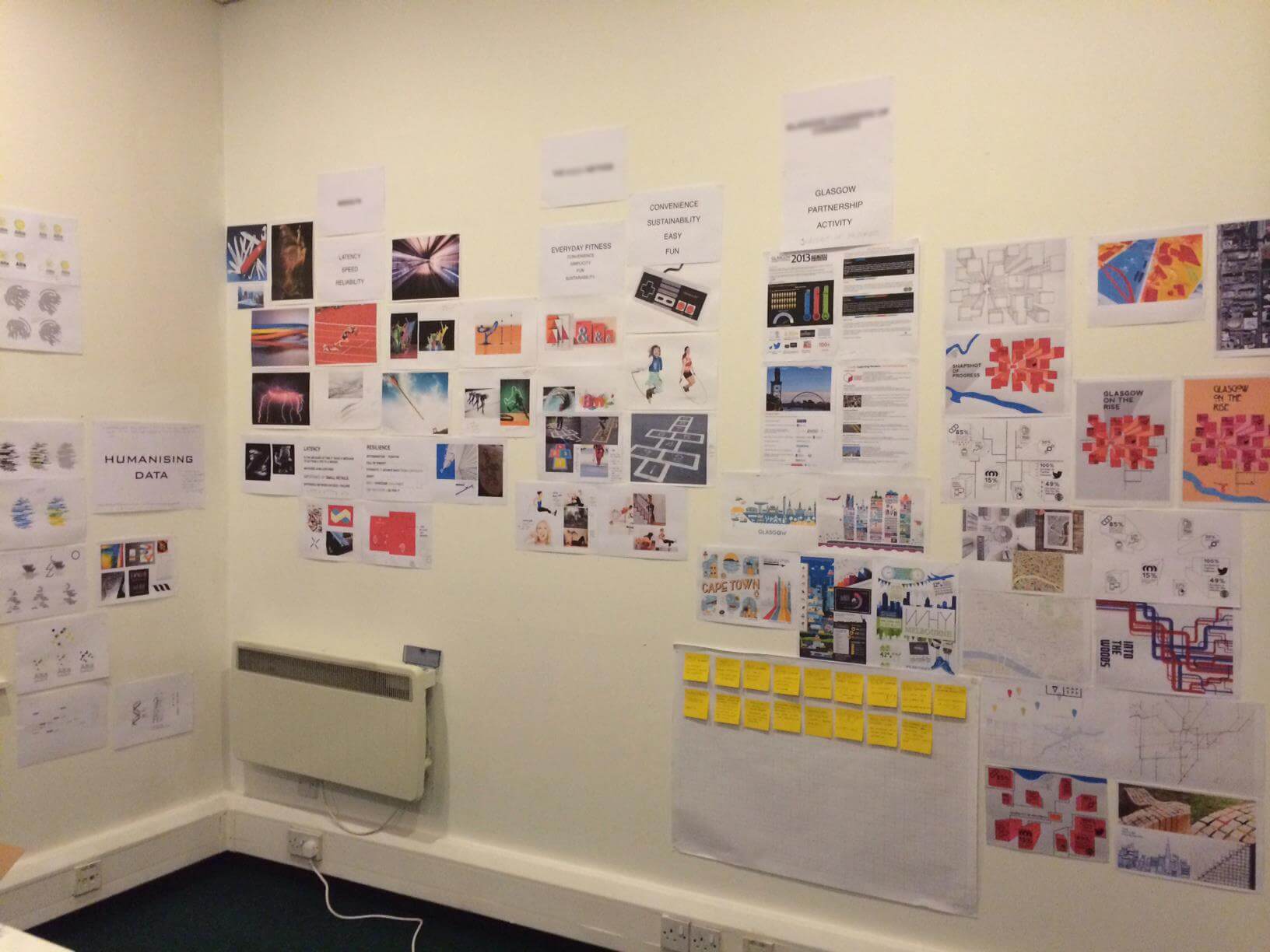
Every project we do begins with words to suggest thoughts and feelings that should be aroused when you engage with the design solution.
3. START WITH WORDS
Every single project should begin with words, not images and absolutely not images of competitors work, or benchmarking. A brand, a piece of graphical work, a piece of digital work should arouse various thoughts/feelings in the people that will see this work. Those words/thoughts/feelings or even stories should be the starting point for any project. They provide a much greater scope for imaginative thoughts and ideas. We risk cutting off too much of what a designer can really create if we limit their imaginations at the very first try. Interestingly most projects will start with a various message or set of words which will be imperfect themselves, as you hone your graphical solutions, you become more able to hone the words themselves to really understand what you wish to communicate. There is almost a see-saw effect between the words and images as progress into your design balances each other out as both become more in-line with the actual message.
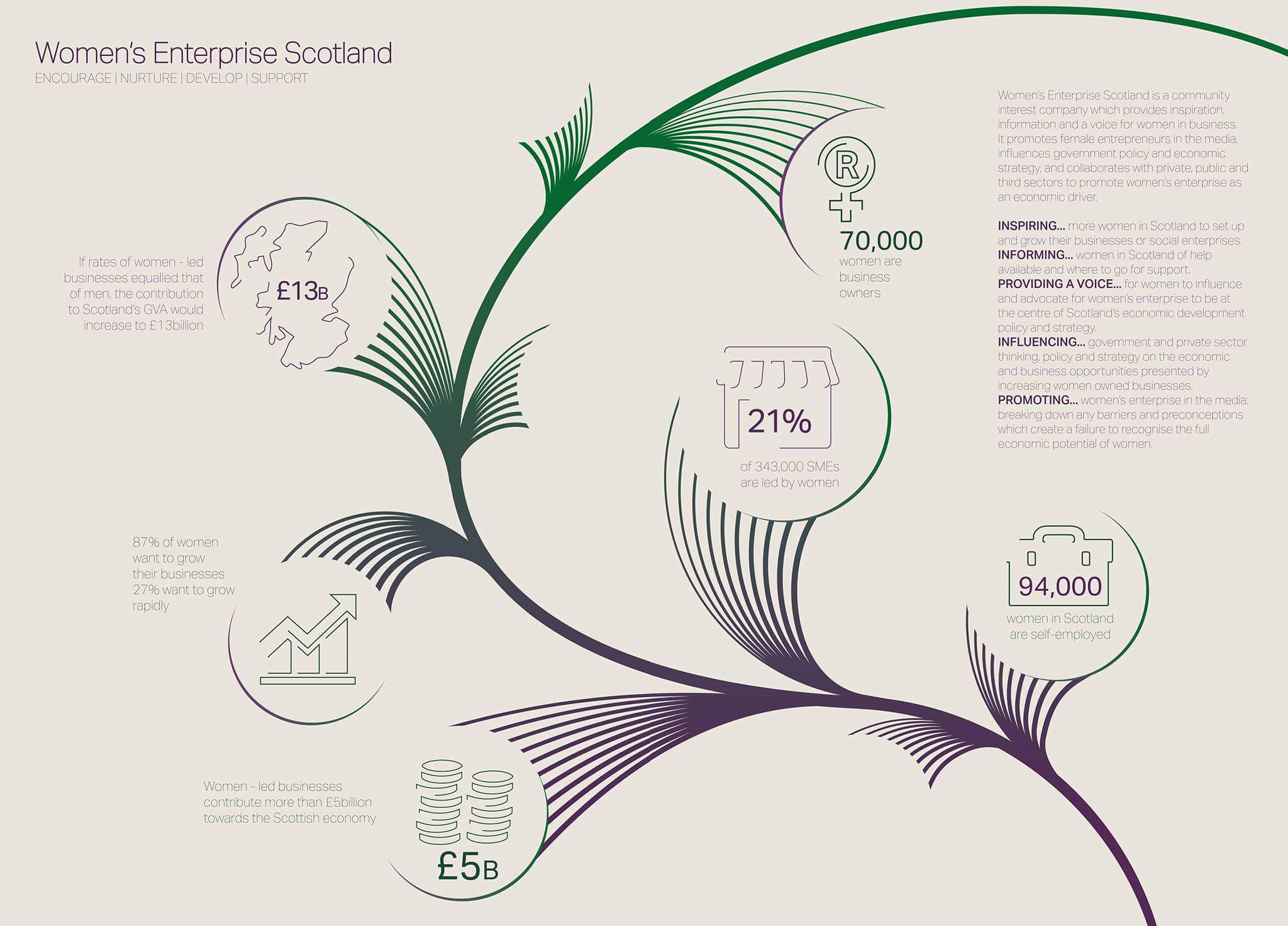
Rooting out the true inspiration for The Woman’s Enterprise Info-graphic was pivotal in getting this design right.
4. INSPIRATION IS EVERYTHING!
Inspiration is absolutely everything in this game. It is our duties to seek out the beautiful and interesting – to find those abstract shapes, patterns, marks, textures, lines colours and understand why they arouse certain emotions in us. We begin with mood-boards – those inspiration images are everything to us. The beauty we find in those mood-boards, while understanding and staying true to that beauty is absolutely pivotal to a successful design solution. When our work runs off-course, it is nearly always because we haven’t found or remained true to the beauty in our inspirations. Occasionally, finding the true beauty in that inspiration is where the real work in a project is – understanding if it’s the negative space in a composition, or the symmetry of a shape, or a particular arrangement of colour or the drama of a certain pose – these are all things that you must examine when working with your inspiration images. Once you raise your awareness of why something inspires you, you can take that knowledge and apply it to every technical element of the design project.
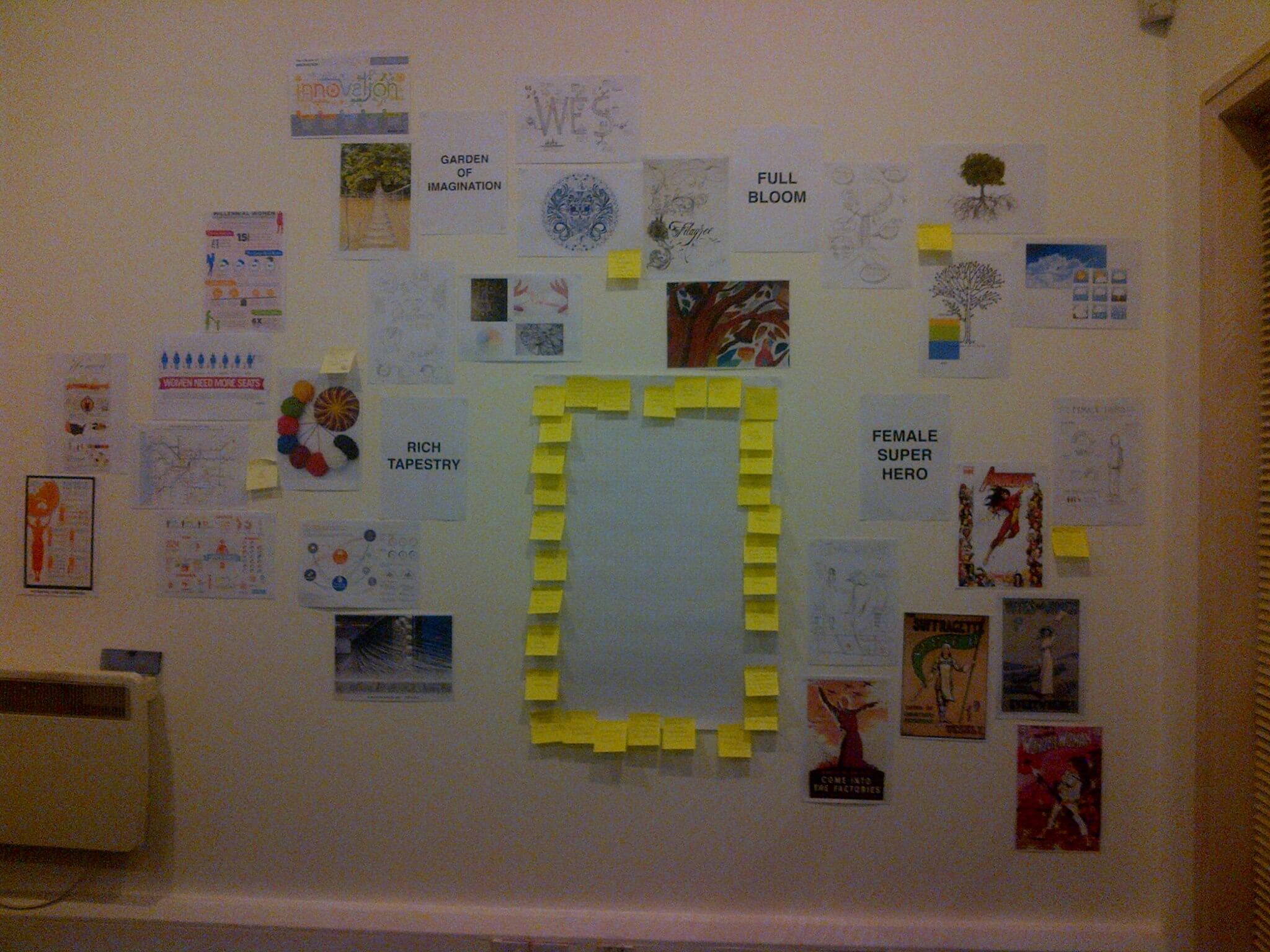
Starting with a wide-open imagination and building in phases allows you to quickly build great solutions.
5. BUILD FROM THE BOTTOM UP!
This is a really important principle, particularly for design students. We all have sky high standards, want to do our best and create something truly outstanding. I can safely say that this seldom, seldom comes in one go. The simplest most effective design solutions you see, usually come from thousands of sketches and ideas that have been communicated, mulled over, rejected, re-brought in, analysed, mixed with others, etc… All of the beautiful, simple and minimal Apple products that you own are the manifestations of thousands, if not tens of thousands of thoughts, ideas and decisions made and culminated into a beautiful piece of design. This is why it is of the utmost importance that you put your ideas down quickly, very quickly. And build from the bottom-up, each time, doing just enough to get you to the next stage. Every company will be different but we usually work with
words>inspirations>concept work>development work>final solution.
This usually involves testing out lots and lots of potential solutions along the way. The greats don’t perfect their initial concepts in one go, they usually build from the bottom up in levels, the difference between the good and the great, is that the greats keep building new levels of excellence into their design solutions. This is where individual taste comes in – it could be to deduce a design to its simplest core components, it could be to add greater sub-stories into a solution or just exploring a particular theme in greater depth.
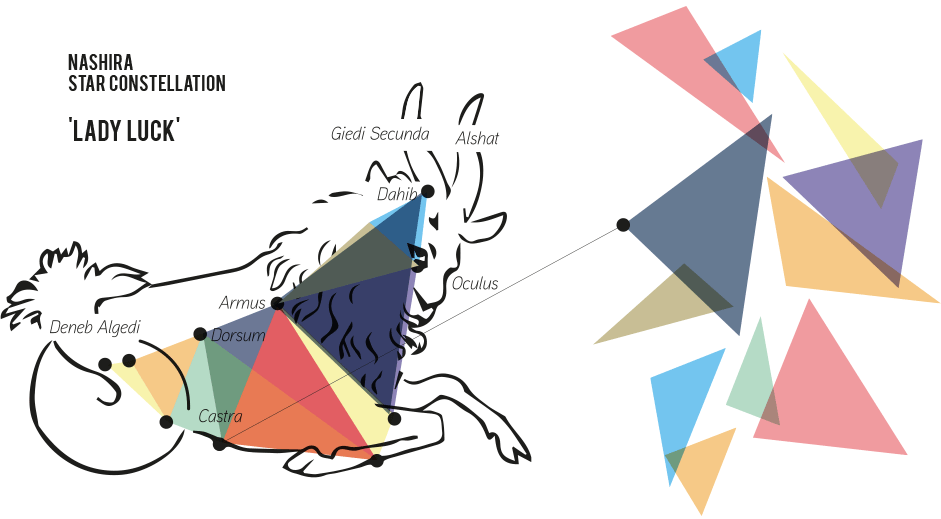
Real exploration of the story behind the design allowed us to use Nashira to take the Bridge2Business brand to new heights…
Two quick tips with this principle…
Especially during the early stages – only see the good in your own work, build on the good and ignore what isn’t working 100% yet. Too many designers try a couple of sketches and try and take them to a close in one go. That is like a boxer trying to knock out the other fighter with one big swinging punch. It seldom happens. If you only see the good – the inspirational, the beautiful, the interesting – this will give the energy and encouragement to drive forward and build in the next stage. You are looking to create, grow and build on the positive and ignore the negative. The perfectionist part or the deductive part of design comes only after a very lengthy creative part, usually at the end when you have a number of solutions to choose from, you should never be trying to perfect your first or even your third sketch.
One other little tip that we use in the studio is that we do 30 second sketches, sometimes even 15 second sketches. Nothing cuts through the logical barriers we occasionally put in front of ourselves by having to sketch an idea in 30 seconds. It is a wonderful process; you will be amazed at the quality and richness of ideas that can be generated from this simple step. It also helps you to become more intuitive as designers. And intuition is a muscle that you very much want to develop as a designer.
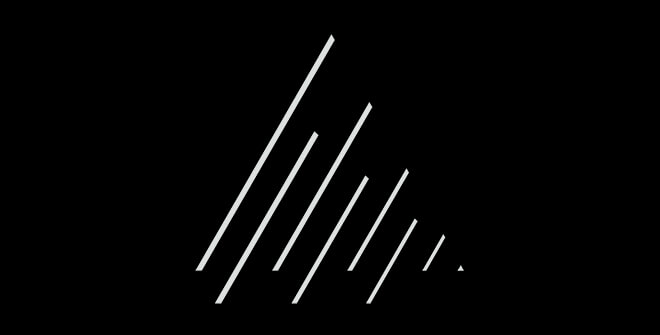
Our own logo required absolute persistence with the concept. Only an 11th hour tweak to stagger the lines created the dynamic imbalance allowing the entire composition to come together.
6. PROCRASTINATION IS BAD!
Everybody will design differently but I am very much an advocate of a high tempo, high-energy, inspiration-led design process. Many of the most beautiful forms of minimalist designs did not come from a single idea that was perfected as a sketch but as the results of fast thinking, fast generation of ideas and decisiveness by the designer or design leader managing the process. No thought, idea, sketch or even development should be treated as precious; they are simply the building block to a ‘next-stage.’ As stated, the greats tend to have a lot of ‘next-stages’ which leads to better and better design solution. Lots of designers are guilty of making their mind up slowly then changing them quickly. Decisiveness is so important as a designer, most people don’t realise that you can just about make any visual idea work with a truly committed decision and lots of persistence. In the loft, we make our minds up quickly, intuitively, and then we persist, persist, persist with a certain path or idea, almost to the point that it hurts. A truly great design is usually just a slight tweak away, and many of our greatest efforts only clicked at the very last moments. However, on the odd occasion when we haven’t been able to make an idea work, when we have taken a design so far down a wrong road, it is only by pushing it so far in a mistaken direction that we suddenly have absolute clarity about where we have fell short and why another concept may work better. The type of clarity you can’t get if you don’t persist with a chosen idea.
7. THE ANSWER LIES INSIDE
As you progress with a project, the greater will be the temptation to start looking at others for ideas or inspiration. The Meerkat syndrome. This can have fatal consequences in the quality of your design solution – you lose the original purity of thought or inspiration by looking at others. Occasionally clients will ask for benchmarking activities and it is something that should be looked at briefly at the beginning of projects as well as at the end of projects, but unless asked to be done, designers should not be looking at other designs for inspirations unless they are very much in-line with the inspiration/idea/theme/story that are being explored throughout the project. Do you really believe that the Apple designers are thinking about what the Samsung guys are going to do next? Do you think the Audi designers are staying up at night thinking about what Hyundai may do next? Great design is nearly always about purity of expression and this purity is ruined when you manually force your own creative endeavours. The answer to any problems with a piece of visual design can be found by looking at your own inspirations, ideas, themes and stories, getting to know them better and faithfully exploring them for more creative solutions not lumping an element from another design onto your own.
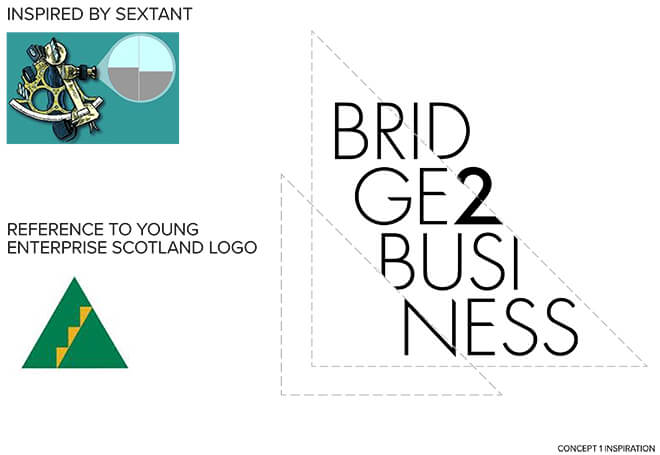
Even a huge amount of work goes into design proposals that eventually become rejected. Indeed we have a dustbin of work never used, that would be the envy of many…
8. ACTION
There is literally no design problem that can’t be solved with positive action. This principle is mainly a re-affirming of the other principles. A high energy and productive studio brimming with ideas will always have enough momentum to create great solutions and that also includes solutions that have been honed to perfection. Every time you think you are hitting a creative brick wall or are torn between two solutions that don’t seem quite right – develop them both and throw in another 3 solutions for good measure. Action means you have momentum. In design terms at least, it is better to be 80% down the wrong road than to not have started. Some people have failed 5 times and still find the right solution before others have barely even started to get going so let the word ‘ACTION!’ be at the heart of your design style.
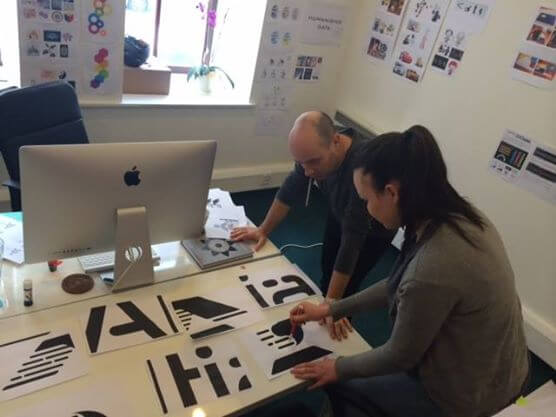
Big, small, upside down, colour, no-colour, every project is a step into the unknown and learning as much about your design will help you reach a great final solution.
9. ONCE YOU’RE DONE, TEAR IT UP AND START AGAIN
To ensure that your designs have real purity – take them apart and put them back together again. Reduce them to their core components on the wall or on your art-boards, hone them, analyse them and ensure that there is a real consistency there piece-by-piece. Every piece of design, when reduced to its core components should have a common language running through them that is in line with your original inspirations. We print our logos big in the studio then cut them into individual parts to ensure that the radiuses are all consistent, that the relationship between lines are correct, to ensure that every individual part is as consistent as it should be. We look at them in the mirror, we turn them upside down, we look at them big and small, we look at them as black and whites and as negatives. Every part of the process allows us to learn something more and be creative in a further way. This is the rigour and technical discipline that is necessary to create outstanding solutions.
10. DON’T LET IT OWN YOU…
In the studio, or during work times, a designer must really give their all but it’s important to have a great life outside of it. Many designers have the wrong idea about how they work. They live for their work instead of treating it as work. This is wrong and counter-productive. Professional designers must own their projects not the other way around, if you are overly precious about anything in life, it owns you and not the other way around. If a designer is overly precious about their work – they will not take risks with it and he/she has to take risks. They will become tired of it quicker and this lack of enthusiasm will be reflected in the final solution. A designer needs balance. So much of what we do is about inspiration. If a designer is inspired – they will batter through their work at twice the speed anyway and this immediacy also enhances the final solution. We see inspiration as a little bit like a sand egg-timer. The more inspired an environment feels – the more the designers will work but the less it will feel like work. They will be in the zone, expressing themselves in their love of what they do. The less inspired they feel – the more turgid, ponderous the work will become, the hours will become longer and this is then reflected in the final solutions. But worst, it becomes part of the work/life balance. I have no time for this image of the miserable creative who puts his entire life on the line for their work allowing all other areas of their lives to suffer. We are professional designers, we must love what we do and to love it means not to suffocate ourselves with our love of what we do or our ambitions of what we want to do. Yes there will be times when you will have to work harder and longer but on the most part 7-8 hours a day is more than sufficient.
The 10 principles here can only work if you are at your energetic, inspired and productive best and this can only happen if you are happy outside of your work going in and that means owning your work and not letting it own you…
On a final and more positive note, many have spoke of the demise of design and communication as part of todays creative landscape and it is true that the majority of agencies growing in this area are digital companies but there are newer, more exciting opportunities for the type of designers who will find the above information interesting. Alongside areas in new digital mediums, communication is becoming more and more prominent for companies/individuals who need to engage with ever more distracted and busier customers, staff, shareholders, board members, etc than ever before. In the last year, I have spoken to clients who are looking for what we do to illustrate their business plans, to present investment information to funders, to present information in a court of law. For those that can provide delightful solutions to complex communication problems, there are likely to be no limits in what you can do. I hope the advice above proves to be helpful.
Benedetto
Benedetto is a designer and founder of the loft – a specialist design studio based in Glasgow.
The loft takes the true essence of what organisations do and with his team brings those stories to life with a coherence, simplicity and delightfulness that helps companies to create outstanding brand communications.
‘Design with Soul’ is more than a company tag-line to Benedetto, it is a way of life.
His journey has taken him from a career in car design through to his current role. He is honoured to manage a great team, work with great clients and have a lot of fun mixing with so many great people in business.
